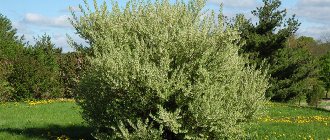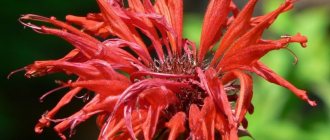Lilies are loved by flower growers and gardeners almost as much as the “queen of flowers” - the rose. Since lilies are so popular, breeders from around the world are trying to develop new varieties of these perennials, differing in color and shape of buds, higher resistance to frost and various diseases.
Currently, more than 100 new varieties and hybrids of lilies have already been bred, each new one has its own positive qualities. This article will talk about the most original and beautiful of them - the Marlene lily, on each of the flower stalks of which more than 90 buds bloom simultaneously.
General information
Many gardeners love to decorate their garden plots with unusual and original flowers. One of the most popular are lilies. Today, breeders have developed more than 1,000 varieties of this magnificent flowering plant, which combines the strength of a strong and powerful stem with the tenderness of bud petals.
Lily Marlene is one of the varieties of the Asian group. As noted above, this plant is capable of merging individual shoots (fasciation), resulting in the formation of a beautiful spherical inflorescence. Multi-flowering is the main advantage of the variety.
It should be noted that any novice gardener can grow this hybrid. This variety is easy to care for, tolerates frost well, and reproduces easily. Such advantages have long attracted the attention of flower growers to this wonderful exotic plant. It is grown in flower beds to create interesting compositions and for cutting into bouquets.
The following are photos and descriptions of the Marlene lily, features of care and reproduction.
Description of exquisite flowers
Let's immediately tell you about the main advantage of the Marlene lily variety. And this is a luxurious flowering - one stem can decorate up to 100 inflorescences, while no one can fully explain why this happens. Some scientists consider flowering not a varietal trait, but a mutation that may or may not occur. The reason was the fact that lilies can both have abundant flowering and be quite ordinary.
Some claim that you can achieve 100 inflorescences with the help of good fertilizers and growth stimulants. It is noteworthy that the Marlene lily mutates only outdoors; when grown at home, which is also possible, this does not happen. But still, the most common explanation is that the stems at the very early stages of development grow together, which is why many buds are formed, which then turn into buds and flowers.
Varietal characteristics:
- medium-sized plants – up to a meter tall;
- flowers in diameter can exceed 15 cm, the variety belongs to the large-flowered species;
- the shade of the petals is pink, very delicate and pleasant;
- propagated by bulbs that have scales;
- Marlene lilies are disease resistant;
- grown outdoors and at home. At the same time, you can regulate the flowering to receive bouquets for the holidays. Tulips are grown in a similar way;
- can grow in a flower bed and in flowerpots;
- flowers after cutting can remain fresh for a long time, and therefore they are often used by florists to make bouquets;
- abundant flowering does not occur immediately, but after 2-3 years, as the bulb must grow;
- The variety blooms in June, reveals its full beauty by the end of the month, blooms for a long time;
- The leaves on the stems are narrow and long.
You have become acquainted with the description of the Marlene lily. The variety can really decorate any garden; its big plus is that lilies can be grown in pots and flowerpots. This is very convenient, because now the climate is very changeable - winds alternate with showers, hail, and drought. Tall and delicate flowers may suffer outside, but they will feel very good on the veranda.
Many gardeners, fearing for their plants, began to plant the most decorative and beautiful flowers in spacious containers. They can be moved, creating new compositions throughout the summer, and also hidden from bad weather in time. Well, let's move on to the secrets of growing.
Legends of lilies
There are many legends associated with this plant. In Ancient Greece, it was believed that white flowers (lilies) were drops of the milk of Hera, who was the wife of Zeus. And in European myths it is said that only this one of all the flowers of the Garden of Eden was able to remain pure and immaculate after Adam treated himself to Eve’s apple. In Christianity, the lily is a symbol of the Mother of God.
These exotic plants have long been used in heraldry. Descriptions of these flowers are found in prose and in many poetic works. We present a photo and description of the Marlene lily in our article. Note that these plants are not only beautiful, but also have healing properties. The military doctor Dioscorides in Ancient Rome wrote a treatise “On Medicines,” which stated that white lilies can cure burns, wounds, abrasions, bruises, and help with heart disease and toothache.
Bloom
Marlene is an early variety; they begin to bloom quite quickly. From the appearance of the first small sprouts to the start of flowering, on average, less than three months pass - about 75-80 days. This period may be adjusted depending on conditions, care and weather conditions, but not significantly.
The first flowers may not impress you - they are often small and look slightly faded, even with good care. This is absolutely normal - in the second and third year you will get luxurious lilies.
Interestingly, flowering can be accelerated or delayed - a useful quality for flower shop owners.
For example, you know that by August you need a lot of lilies for your wedding bouquets. You see that the flowers are not yet ready to bloom - then increase the lighting and watering.
If the situation is the opposite, there is still a lot of time until the date when the flowers are needed, and the buds are ready to bloom - move the flowers to a colder room or artificially reduce the temperature where they are located. This will slow down the process.
Already cut flowers stand well in fresh water - in order to admire the bottom longer, it is enough to regularly change the water and periodically trim the stems.
This is interesting: The best frost-resistant grape varieties
Description of Lily Marlene
The Liliaceae family is large in composition. It includes perennial bulbous herbs with large, open, bell-shaped flowers.
The Marlene variety was developed through cross-pollination of long-flowered and Asiatic lilies. Lilies got their name from the famous German song “Lili Marlene”. They identify the image of a gentle and beautiful girl. The prototypes of the images are two beauties Lily and Marlene.
The relatively simple stem of this lily is densely leafy. It can grow up to one meter in height. As noted above, it has an unusual shape due to fasciation and is colored light green. Such a thick and strong flowering stem can withstand quite heavy loads and form a considerable number of flower buds.
The leaves of the plant are alternately arranged, elongated, sessile, and pointed at the end. The Marlene lily has a root bulb. Gradually increasing, it grows over several years. The plant does not bloom during this period. Only after reaching a certain size does it release a peduncle. Further, the hybrid lily blooms annually.
The large perianth of the lily (the flower diameter can be up to 20 cm) consists of six petals bent to the edges, forming a large bell. There are anthers on thin long threads. The petals of the flower have a pink tint, gradually becoming pale towards the center.
Diseases and pests
Lily Marlene has high immunity to viral diseases and relative immunity to fungal ones. To prevent the development of fusarium, gray rot or rust, plants are treated with fungicides at the beginning of the growing season.
Among the pests on the Marlene lily, which is rich in foliage, you can notice the lily beetle of a characteristic red color. The neighborhood is unpleasant. It feeds on leaves and sometimes flower petals and leaves sticky brown marks on the stems. As a control measure, repeated use of insecticides can be recommended.
Flowering and fruiting
About 2.5 months after emergence, flowering occurs, the peak of which occurs in June-July. Multi-flowering does not appear immediately. This happens only when the bulb has grown well (about 2-3 years after planting the plant) and reached a sufficient size. The fruit of the plant is a capsule with many flat-shaped seeds.
Lily Marlene remains fresh for a long time after cutting, so it is readily used when making bouquets. An unpretentious lily with gorgeous flowers is widely used in floriculture.
Home care
Like all lilies, Marlene is quite unpretentious and does not require complex care.
If you choose the planting time in advance and provide the right conditions, you can get beautiful flowers at any time of the year - say, for an anniversary or a family celebration.
Bulbs are planted in autumn and winter for early spring flowering, in spring for summer flowering, and if you plant a lily in early autumn, you can make it bloom even into the new year!
TIP: In open ground, lilies reproduce with almost any part of them: bulbs, scales, bulbs formed in the axils of leaves... But for home flowers it is better to purchase ready-made bulbs - strong, healthy, weighing about 40 g.
Landing
The size of the pot is selected in accordance with the height of the plant: for our lily, about a meter high, a pot with a diameter of 30-35 cm and a depth of 25-30 cm is suitable. We plant the bulbs at a distance of 4 cm from each other and at least 2.5 cm from the edge of the pot.
IMPORTANT: For most lilies, a single bulb in a pot produces many babies and does not bloom for a long time. The optimal number of bulbs for one pot is 3-4.
Forcing lilies begins with a stratification procedure - a rather sharp change in temperature.
This allows you to wake up the plant and “set” the flowering date.
The bulbs are kept in the refrigerator at a temperature of about 5°C for 15-20 days. After this, they are taken out and kept in a solution of potassium permanganate for 1-2 hours.
Then they are soaked in a solution of nutrient fertilizers and growth stimulants for about 12 hours and then planted in pots.
The soil
At the bottom we place 5 cm of drainage (river pebbles, expanded clay, pieces of polystyrene foam), then 10 cm of fertile soil (neutral or slightly acidic peat mixture), lay the bulbs on this layer with the sprout up and add at least another 10 cm of soil.
TIP: When planting, there should be at least 7 cm left to the edge of the pot: during the growth process, additional roots appear that need to be covered with soil.
Temperature
The planted bulbs are watered with warm water and... placed in the refrigerator again for 3-4 weeks. The total stratification time is therefore 6-8 weeks. During this time, the plant takes root.
ATTENTION: Do not cover the pots with film to avoid the growth of bacteria and fungi. If it is not possible to keep the pot in the refrigerator, it is enough to take it to a cool room.
When the sprouts appear, the lilies are taken to a bright place with an air temperature of 12-15°C.
It is recommended to harden young plants after 1 month: take them out to the balcony or fresh air, first for 30 minutes, then gradually increase the time to 10 hours a day, avoiding night cold below 10°C.
In city apartments this is not always possible, so the lily grows well at room temperature.
Lighting
Lilies are light-loving plants.
If they do not have enough natural light, it is recommended to use fluorescent lighting.
Additional lighting is necessary if you want to receive flowers outside of normal hours.
It is better to place pots on the west or east side, avoiding direct sunlight.
Watering
Water young shoots no more than once every three days - excess moisture can destroy the plant. In the first year, lilies usually do not bloom, but the bulb gains strength and becomes stronger.
TIP: If the air in the room is dry, spray the plants with a spray bottle.
Lilies love fresh air, so ventilate the room more often.
As the flower grows, water more often and more abundantly, but make sure that no water remains in the pan and that the moisture does not stagnate.
Feeding and stimulation
The first fertilizing with organic fertilizers is carried out after the emergence of seedlings.
During the period of leaf growth, nitrogen fertilizers are added, and with the appearance of buds, phosphorus-potassium fertilizers are added. Treating the plant with growth stimulants (2 times a week) will increase the number of buds.
The soil should be regularly loosened to a depth of 5 cm, ensuring air flow to the roots.
Bloom
Flowers of this variety begin to bloom 75-80 days after the first shoots appear.
Increasing the room temperature, additional lighting and increased watering will speed up flowering; moving the flower to a cold room will slow down the onset of flowering.
This can be used for “custom” bouquets.
The most beautiful and powerful flowers appear in the third year after planting; after 5-6 years of use, the plant needs to be renewed.
REFERENCE: Lily blooms from 7 to 15 days, up to a dozen flowers appear on the plant. Fasciation usually does not occur indoors. It is better to remove fading flowers immediately so as not to weaken the bulb.
Pruning and replanting
But now all the buds have faded... it’s time to prepare the lily for the dormant period.
We reduce watering to once a week, combining it with mineral fertilizing.
ATTENTION: Until all the stems turn yellow and dry, transferring nutrients to the bulbs, the plant should not be touched.
Two weeks after the last leaf of the bulb has dried, you need to dig it up, cut off the remaining stems, wash it, hold it for 30 minutes in a weak solution of potassium permanganate, then dry it, place it in moss or sawdust and store it in a dark, cool place.
It is better to immediately plant the children in a separate container - this is the best way to reproduce at home. Marlene, as an Asian hybrid, has few children, and you can do without a transplant for several years.
Diseases and pests
In open ground, lilies can be damaged by insects (lily beetle and its larvae, mole crickets, wireworms, etc.).
At home there is practically no such danger.
The main enemy of the house lily is onion or bacterial rot - most often this occurs from waterlogging.
Rotten bulbs and damaged leaves must be removed and destroyed, the remaining plant should be treated with antifungal drugs (Bordeaux mixture, phytosporin, etc.).
Features of culture
Resistance to sudden changes in temperature, early flowering, the presence of many spectacular large flowers on the stem without the suffocating intense odor characteristic of many plants from the Liliaceae family - these are the features of the Marlene variety, allowing many gardeners to grow them in their garden plots.
A huge bouquet of flowers on one shoot is a key sign that the plant belongs to the Marlene variety. This, as noted in the article, is connected with the phenomenon of fasciation or mutation, when under the influence of external factors (stimulants, fertilizers, biological regulators, various mechanical damage to the bulbs, weather anomalies, etc.) the morphology of the plant changes. In the case under consideration, the stem is transformed and the number of buds is increased.
Under unfavorable growing conditions of the variety, the buds may not set so densely; the plant may form only one or several flowers. At the same time, the lily loses its former decorative effect. But it may also happen that next year it will mutate again, forming a large number of buds. The fact is that fasciation is not a fixed varietal trait, but only an increased propensity of the plant to changes of this kind.
History of selection
Lily Marlene is a hybrid variety obtained by crossing two species - long-flowered (longflowers) and Asian. As a result, the plant received resistance to sudden temperature changes and early flowering from its parents. The new variety has no aroma, which allows it to be grown by those who are allergic to the characteristic floral smell.
The Asiatic multiflora Marlene lily is believed to be named after a song famous and popular among German soldiers during World War II. The name includes two female names - Lily and Marlene. In the same way, two varieties came together as a result of selection and gave rise to a new one.
Landing
Lily Marlene is an unpretentious plant that grows easily both in open ground and indoors. It should be planted in open ground in the spring, when the soil has warmed up well enough. This period usually falls in April-May, depending on climatic conditions and the region.
When purchasing plant bulbs in the fall, it is best to store them in a cool, dry place until spring to avoid sprouting. Of course, autumn planting in open ground is practiced, but in this case there is a risk of damage and freezing of the planting material. Before planting, it is advisable to treat the bulbs with a solution of karbofos, which perfectly protects them from pests and disinfects them.
The depth of planting in the soil depends on the size of the bulbs. As a rule, it is equal to three bulb diameters. The soil for the Asian Marlene lily is preferably loose, fertile and well-drained. Loamy and clayey soil must be mixed with sand, peat, and humus. Fresh manure should not be added to the soil, as such concentrated fertilizer can contribute to the death of planting material.
To plant plants, you should choose well-lit, sunny places protected from drafts and winds. Shade and constant wind can cause buds to fall off. Stem bending, depletion and weakening of the plant may also occur.
After placing the bulbs with their roots down in the prepared holes, to which a little sand has been added, the soil should be compacted and watered, and then the area should be mulched.
Diseases, pests and treatment methods for Marlene lilies
Due to improper storage of bulbs and care of the plant, various diseases may occur. Quite common are fungal infections of the bulbs, which lead to rotting. To prevent them, the storage conditions for planting material should be observed.
The fungus loves dampness and warmth, so the bulbs should be kept in a cool, dry place.
Rot can also be caused by excessive watering and stagnation of water. For treatment, it is necessary to treat the infected bulbs with an antifungal solution. Before this, areas affected by rot should be removed. Quite often, various pests can be the cause of poor flower growth, wilting, and death. The most common are:
- Khrushchev;
- mole cricket;
- lily fly;
- lily beetle;
- aphid;
- spider mite
Lily fly
They should be controlled using appropriate insecticides. It is necessary to carefully inspect the plant in order to notice pests in time. It is possible for the flower to become infected with viral diseases. They cause various cellular mutations and cause the death of a generation of flowers. The carriers of viruses are most often aphids. The photo shows a lily affected by aphids; it may subsequently develop a viral disease.
Viral diseases are extremely difficult to treat. If an affected plant is found, it must be dug up and the ground where it grew treated with a boiling solution of potassium permanganate to neutralize it.
It will also be interesting: Pyramid lily - varieties and names, planting and care ⚜
Care
As you can see, planting the Marlene lily is quite easy. Caring for it is also very simple. This variety is absolutely unpretentious and resistant to unfavorable climatic conditions. For a hybrid lily, basic agrotechnical practices are sufficient: regular watering, periodic loosening and fertilizing. With a tall stem with a lot of buds, it is better to tie the plant so that it does not break.
It should be noted that stagnation of moisture must be avoided. This may contribute to the rotting of the bulb. Loosening the soil (especially immediately after watering) has a beneficial effect on the development and growth of the plant, as soil aeration improves, promoting good air exchange. Mulching is an ideal option for improving soil properties and preserving moisture. Humus, peat, pine needles and other materials can be used as mulch.
Rules for caring for and growing in the garden
Caring for Marlene is easy. It consists of regular watering, loosening the soil and fertilizing the plants. Let's find out what a lily needs during the growing season.
Watering
Water lilies as needed, preventing the soil from drying out. On hot days I do this every day, and on cloudy days – 1-2 times a week. But overmoistening is also undesirable. For irrigation, use settled tap or well water in such an amount that the moisture penetrates to a depth of 20 cm.
Top dressing
During the summer, the Marlette lily is fed three times:
- Lilies are fed for the first time when the first shoots appear. At this time, nitrogen fertilizers (humus, mullein or chicken droppings) are needed. You can fill the holes with humus, and mullein is prepared from manure, which is diluted in 10 parts of water. Chicken manure is diluted in 20 parts of water.
- The second feeding is carried out during the budding period. Complex fertilizers designed specifically for lilies or for flowering plants (Formuleks, Zdraven, Kemira) are suitable for this. Instead of mineral fertilizers, you can use wood ash (200-300 g per m2), humus (a bucket per m2) or a solution of cow manure (1 to 10).
- The second feeding is done when flowering ends. At this time, lilies need large amounts of phosphorus and potassium. There are a lot of these elements in the ash, which bulbous flowers love so much.
Attention! If the shoots develop too wildly and there are few buds, eliminate nitrogen fertilizers. It is better to have a little lack of nitrogen than to have too much nitrogen in the soil.
Loosening, mulching
Lilies are responsive to loosening the soil. This procedure helps saturate the soil with oxygen, kill pests and retain moisture. Instead of regular loosening, you can do one mulching. Straw, peat, coarse river sand or rotted sawdust are suitable for this. Under a layer of mulch, the soil always remains loose.
Pinching, pinching, pruning
Marlene does not need pruning during the growing season. It is only necessary to remove the above-ground part of the plant after its natural wilting in the fall.
Transfer
Usually lilies can grow in the same place for a long time, but in the case of Marlene, replanting is needed every year. Moreover, it can be planted in the same place every spring, provided that the soil is neutralized and pests of lily and bulbous plants do not live in it.
Top dressing
Lily Marlene should be fed three times during the growing season:
- During the period of emergence of seedlings, nitrogen-containing fertilizers are applied for active growth.
- During the formation of buds, organic fertilizers are added to the soil, as they stimulate the development and growth of the flower (you can use a solution of mullein in a ratio of 1:10, humus and wood ash). It should be remembered that an excess of organic fertilizers can contribute to the appearance of fungal diseases.
- At the stage of completion of flowering, phosphorus-potassium fertilizers are useful. This helps strengthen and restore the plant as a whole.
Experienced gardeners have noted the high effect of using fertilizers for bulbous plants that have a prolonged effect. They are introduced once a season - in the spring.
About the Asian multi-flowered lily Marlene: planting and care in the ground
Lilies are loved by flower growers and gardeners almost as much as the “queen of flowers” - the rose. Since lilies are so popular, breeders from around the world are trying to develop new varieties of these perennials, differing in color and shape of buds, higher resistance to frost and various diseases.
This is interesting: Spiraea Billard: planting and care, cultivation and description of the use of the flower in landscape design (photo)
Currently, more than 100 new varieties and hybrids of lilies have already been bred, each new one has its own positive qualities. This article will talk about the most original and beautiful of them - the Marlene lily, on each of the flower stalks of which more than 90 buds bloom simultaneously.
Reproduction
Lily Marlene can grow well in one place for up to five years, after which the height of the peduncle and the number of buds noticeably decrease. This indicates that the bulb is depleted or the daughter bulbs are too close together. This situation can be easily corrected by planting young bulbs in another place.
Bulbs should be dug up in the fall. Then they need to be washed well and the small onions separated. All planting material must be kept in a solution of potassium permanganate, sorted and stored until spring. The lily can also be propagated by scales from an adult bulb.
Spring pink
The flowers of this hybrid lily are double, pale pink, sometimes almost white. Often the petals are lightly “powdered” with a characteristic purple speck and are framed by a border. There are about 30 buds in one inflorescence.
This variety is similar in characteristics to Marlene: due to the same mutation, the number of soft pink flowers on the stem can reach up to 100. However, in Spring Pink this phenomenon is observed less frequently.
| Purpose | Plant height (cm) | Flower diameter (cm) | Flowering period | Peculiarities |
| 50-100 | 12-15 | End of June – July | With fasciation requires additional fertilizing and garter stem | |
Characteristics of species and varieties
There are several varieties of lilies that can produce a large number of buds. These include Madeleine varieties and some Asiatic lilies. The main qualities of such flowers are a compacted stem, a strong peduncle, and the appearance of a large number of flowers 2-3 seasons after planting.
Another good hybrid belonging to the eastern group is the Marlon lily - a relatively new variety with large flowers. The color of the petals is bright pink with a white border around the edge. The shoots grow up to 1.1 m in height. But no more than 3-4 flowers are usually formed on one peduncle.
This is interesting: Description of the best varieties of gooseberries, 50 largest and sweetest types
Lilies video
https://youtube.com/watch?v=N5DGwwsgnEo
Asiatic lilies are winter-hardy, hardy, unpretentious in cultivation, and grow well both in sunny open areas and in partial shade. Asian hybrids, like their parents, do not grow well on calcareous soils, preferring neutral or slightly acidic and well-fertilized soils.
Asian lily hybrids reproduce easily and quickly by baby bulbs and scales. Many varieties of lilies of this section form small aerial bulbs (bulbs) on the stem in the axils of the leaves. Such lilies are called bulbous. The bulbs ripen (usually towards the end of flowering), fall to the ground and germinate. This is the easiest and fastest way to propagate lilies. Lilies reproduce well by seeds, but despite their rapid germination, their germination rate is below 70%, so it is necessary to sow quite densely.
They bloom earlier than all hybrid lilies in late June - early July. The color of the flowers is very diverse (white, pink, cream, yellow, orange, two- and three-color, red and dark burgundy, almost black). The flower shape is most often cup-shaped or turban-shaped; in relation to the central axis or stem, the flowers can be directed upward (upward looking), to the side (horizontal) or downwards (drooping). The size of the flower, its diameter is from 8 to 20 cm. All lilies have a flower consisting of 6 petals, but in the group of Asian hybrids there are several varieties with double flowers. (Fata Morgana - yellow; Double Whiskey - orange; Aphrodita - pink). Plant height is from 50 cm to 150 cm.
These unpretentious and beautiful varieties of lilies are good for everyone, but they have one drawback - the lack of aroma. Varieties of lilies with white flower color Snezhana, Navona; Andromeda, Nova Cento (yellow); Radiant, Menton (apricot); Natalia, Akito (orange); Ophelia, Vivaldy, Chianti (pink); Bulgaria, Gran Paradiso (red); Michurinskaya Oda, Lollipop (2-color).
These include lilies derived from the forms and varieties of the curly lily or martagon lily (Lilium martagon), Hanson lily (L. hansonii), honey lily (L. medeoloidеs), two-row lily (L. distichum) and Tsingtaut lily (L. tsingtaense).
These groups are: Marhan, Backhouse Hybrids, Paisley. There are few varieties in this section (about 100). All lilies are tall, with turban-shaped, drooping flowers of various delicate colors.
These lilies are very frost-resistant and grow in any soil, but best in good garden soil. They prefer partial shade, but develop and grow well in full sun. The seeds of these lilies germinate in the second year. All hybrids are very durable
High decorativeness, stability, properties that attract the attention of breeders and landscapers to this group of lilies
Growing and propagating lilies
Growing conditions. Sunny and slightly shaded, well-drained areas with loose, nutritious neutral soil. They need constant moderate hydration. For the winter, it is advisable to cover it with a leaf of broad-leaved trees (oak, linden, maple) or spruce spruce branches and mulch.
Reproduction. Lilies are propagated mainly in September - by dividing a nest of bulbs, baby bulbs, and bulbs (bulbs formed in the axils of the leaves). In spring, propagation by bulb scales is possible. Species lilies are propagated by seeds. Seeds are sown either in the spring (sprouts in 30-90 days), or freshly harvested in the fall (sprouts in the spring).
Lilies are planted in flower beds of all types, most often in flower beds and mixed borders. Many varieties are grown as a cut crop and used for forcing.
Uniqueness of the variety
If it were not for the peculiarity of the Marlene lily, then this variety would be little different from other plants of the Asian group. But this representative of the flora has its own uniqueness, which is explained by its tendency to fasciate. This is when several shoots grow together. The result is a huge, blooming bouquet of beautiful lilies. One such bush can give birth to a hundred flowers.
Of course, similar pathological changes occur with other varieties of the Liliaceae family, but to a greater extent they are regarded as isolated and exceptional cases
. The reason for this may be damage to the tuber, violations of the fertilizer regime, natural conditions, etc.
In the case of the Marlene lily, such changes in the plant naturally occur in the 3-4th year of its development. After maturity, the plant forms a bush with abundant and luxurious flowering. Biologists have still not come to a consensus on why this happens with the Marlene lily variety. It is assumed that as a result of selection there was a failure at the gene level, and the variety acquired this feature.
But we must admit that if the process of fasciation occurred in the 3rd year of the Marlene lily’s life, it can be repeated in the 4th year. Although the number of buds may be half as much, or it may form the usual number of flowers for an Asiatic lily (2-10 pieces).
But flower growers do not want to put up with fewer flowers on Marlene. Having seen the abundance of the bouquet at least once, they try to provoke a similar effect in all subsequent years.
. To do this, the tubers are dug up annually, intensively fed with organic fertilizers, and the sunniest place on the site is allocated for the plant.
There is little reliable information about the Marlene lily variety. This plant is not even included in the state register of the Russian Federation.
Those gardeners who have already had experience in growing this plant note that it is one of the unpretentious representatives of the flora. In regions with a temperate climate, you do not need to remove the tubers from the soil for the winter. If the climate is harsh, the Marlene lily bulbs can be removed for the winter (which is not recommended), but it is better to provide them with shelter.
If the Marlene lily does not have spherical blooms, do not despair
. The process of fasciation will occur only in bulbs that have reached 3 years of age. It is difficult to predict in advance how many stems will grow together. But for a greater likelihood, it is recommended to create optimal conditions for this.
Beautiful flowers:
Mesembryanthemum Dimorphotheca or African chamomile Brachycoma
Important!
Feeding for the Marlene lily is of great importance, because to ensure the flowering of so many buds, a lot of resources are needed.
It is necessary to ensure that the lily tubers are kept relatively cool. To do this, it is recommended to plant low-growing plants in the neighborhood. Petunias, bluebells, daisies, marigolds, violas, etc. act as pleasant neighbor lilies.
Asiatic lilies
These include hybrids and garden forms derived from tiger lily (Lilium tigrinum), drooping lily (Lilium cernuum), David (Lilium davidii), Maksimovich (L. maximowiczii), pleasant (L. amabile), dwarf (L. pumilum), single-color (L. concolor), bulbous (L. bulbiferum) and interspecific hybrids: spotted (L. x maculatum) and Dutch (Lilium x hollandicum).
This section also includes lilies of the group: Mid-Century, Fiesta and numerous hybrids - Harlequin hybrids, Golden Chalice and Coronado. Hybrids of S. Patterson, E. Palmer, F. Skinner, P. Byam and I. Taylor can tolerate snowless winters with frosts up to 40°C. Grown in harsh Canadian conditions, they are indispensable for the northern regions of our country. This section also includes the famous hybrids of Isabella Preston, Sestroretsk hybrids, hybrids of I. L. Zalivsky from the pleasant lily, hybrids of the famous lily grower V. P. Orekhovs.
Flower care
The plant needs timely loosening of the soil, regular watering and fertilizing with complex fertilizers.
For a young plant older than 1 month, hardening is performed (the pot is taken out into fresh air, the first two days the procedure lasts half an hour, and then it takes 10 hours a day). If the temperature at night exceeds 10 degrees, then during this time the pot remains on the balcony or outside.
Care involves providing light. In winter, you should use a fluorescent lamp or phytolamp. And if you want to get a plant by a certain date, then additional lighting is simply necessary!
However, such flowers do not like to be in direct sunlight - they need to be placed on a window facing the east or west side.
Species diversity of lilies
Our ancestors were fascinated by the perfect shape of flowers, their aroma and variety of colors. Today, garden flower lovers have access to varieties of lilies from different parts of the world, as well as hybrids and varieties obtained from their crossing.
White lily (Lilium candidum)
In Europe, they treated the white or snow-white lily (Lilium candidum) with special trepidation, considering it a standard of divine purity and innocence. A plant from the Mediterranean region was valued by the Hellenes, and later, with the spread of Christianity, it was revered as a symbol of the Virgin Mary. And then a funnel-shaped flower with a diameter of up to 7 cm became the prototype for the heraldic royal lily, which adorned the coats of arms of many royal dynasties of Western Europe. Today, the species is well known to flower growers; many wonderful varieties and hybrids have been obtained from it, differing from their wild ancestors in greater hardiness and large flowers.
Curly lily (L. martagon)
Another well-known variety is the curly lily (Lilium martagon), which many know as the royal curls or Turkish lily. The plant, up to 150 cm high, gets its name from its original turban-shaped flowers with curved or outward-twisted petals. The color of lilies may vary.
Most often they are found with pinkish-lilac flowers, but thanks to the efforts of breeders, white, wine-red and even almost black lilies have been obtained, characterized by amazing endurance, winter hardiness and regular flowering in the first half of summer.
Regal lily (L. regale)
Thanks to the beauty of its flowers and enchanting aroma, the regal lily (Lilium regale) has gained incredible popularity among gardeners.
The plant comes from the Chinese province of Sichuan, forms an erect stem with a height of 100 to 180 cm. Flowering begins in mid-July, and at its height there can be up to three dozen large buds on one plant. Flowers up to 15 cm in diameter are distinguished by their tubular shape, pinkish color on the outer surface of the petals and a soft yellow spot in the center of the corolla. The stamens covered with bright yellow pollen give the flowers an additional decorative effect.
The popular species is widely used by breeders. Based on this variety, many tubular hybrids and varieties of lilies have been obtained, photos and names of which make the hearts of thousands of garden flower lovers tremble.
Tiger lily (L. lancifolium)
The tiger lily (Lilium lancifolium) came from Asia to Russian gardens. An unpretentious plant that reproduces by vegetative methods is easily recognized by its pointed, lanceolate-shaped leaves and turban-shaped flowers of orange or yellowish color located alternately on the stem. The petals are covered with brown or black spots, which is why the lily got its specific name.
Flowering of plants up to 120 cm high begins in the second half of summer, while up to 15 spectacular flowers can open on the stem. In addition to varieties with regular flowers, today breeders offer double varieties of tiger lily, as well as its hybrids with other related forms.











